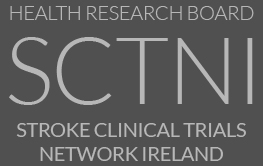FAQ's
CONVINCE (Con 001)
Consent is always obtained prior to any trial activity. CONVINCE consent is obtained at the screening visit. This is necessary as not all hospitals routinely carry out and document modified Rankin scores. If a modified Rankin questionnaire is obtained purely for the purpose of the trial then it is considered a trial activity.
Yes, and we encourage you do so. When a subject is identified as a possible CONVINCE recruit all tests should be routinely available to ensure inclusion and exclusion criteria is met. The 28 days screening period is used to facilitate any outlying issues/subject personal commitments.
No, AST is no longer mandatory but should an AST value be available it should be inputted into the ECRF.
No, documented medical opinion that other identified cardiac sources was NOT causality for qualifying event will suffice.
“Stroke/TIA probably caused by other identified cardiac source (intra-cardiac thrombus, endocarditis, metallic heart valve, low ejection fraction <30%)”
Amenorrhoea for 12 consecutive months, same should be documented.
Questionnaires are the first trial activity of the randomizataion visit and the EQ-5D-5L needs to be the first questionnaire completed. It is especially important that EQ-5D-5L be carried out prior to randomizing the subject.
No, only patients with a known diagnosis are excluded.
No, these patients are eligible.
Yes, specific general instructions will be accompanying each questionnaire. Web sites for training purposes will be provided and certificate of completion obtained where relevant.
Yes – race needs to be captured in the patient medical notes as this information needs to be entered onto the eCRF.
The visits in CONVINCE have a +/- 7 day window and are timed on ‘weeks’ and not calendar months. It is important, that the patient return for the follow up study visits as outlined in the protocol (clinic visits for follow up care at clinic/hospital can be timed in conjunction with this study visit).
Yes, AEs are assessed for all patients identically.
No. It is extremely important that patients are assessed as being highly likely to be compliant to all study procedures including compliance with IMP prior to enrolment. Any dropouts and non-compliance will be detrimental to efficacy data results.
Yes. All medics who are delegated to obtain consent on the delegation log are permitted to obtain written informed consent.
The patient is within the 28 day timeline to be eligible to enter study (and has a minimum of 72 hours since the event), therefore they should be considered for inclusion in CONVINCE.
It is anticipated that eGFR will be measured using the MDRD equation but the Cockroft-Gault equation will also be used. A tracker of which method is used per site will be maintained in the project office.
Currently there is no assent consent form approved for CONVINCE but we will be reviewing this in the 1st phase of the trial.
Yes, they are permitted to stay in the trial.
No, this is does not meet exclusion criteria but if the treating physician is under the impression that cardio –embolic causality may be a factor then the patient should be excluded.
Yes, a patient is permitted to get colchicine for gout if warranted but the project office needs to be notified and the duration of treatment should be short-term only.
No, the protocol stipulates that the 1st dose administration should be observed during the randomization visit.
In this case the 28 window between screening and randomization should be utilized. Consent can be obtained prior to discharge and then a randomization visit should be arranged ≤ 28 days from event.
This is considered as an SAE because it is possible that ‘colchicine’ has caused an opportunistic infection.
No, Colchicine is not licensed in crushed form.
A seven day wash out is required for prohibited drugs.
In the case of non-compliance, study protocol suggests the option of dose reduction to 0.25mg daily for an agreed period if other solutions are not successful. Given the size of the pill it is advisable to trial every other day dosage first.
For the purpose of CONVINCE – a TIA (symptoms lasting less then 24 hours) with a DWI lesion will be classified as a HIGH RISK TIA.
No, only recent use is an exclusion.
Yes, all subjects requiring regular daily immunosuppressants – no matter the frequency – are excluded.
Yes, the protocol states that an ABCD2 score of 4 or more should include motor or speech symptoms (dysarthria or dysphasia).
There have been changes to the study procedures in response to COVID-19. Click on the links below for more information:
Unfortunately as the trial has ended, the patient can no longer be provided with colchicine by the CONVINCE Study Team at their hospital. Patients should contact their GP and discuss their ongoing treatment with them. Note that low dose colchicine is available widely in Europe for prevention of gout and other forms of arthritis.
Now that the trial has ended, it is not possible for the trial team to indefinitely continue to supply colchicine to trial participants. Depending on the results of the trial (not yet available but expected by June 2024), you may wish to consider prescribing low dose colchicine after discussion with your patient. However, please note that this is not required by current treatment guidelines.
Trial results will be published on the https://hrb-sctni.ie/ website, CONVINCE section, by June 2024
Should you have any questions please contact isctn@ucd.ie

